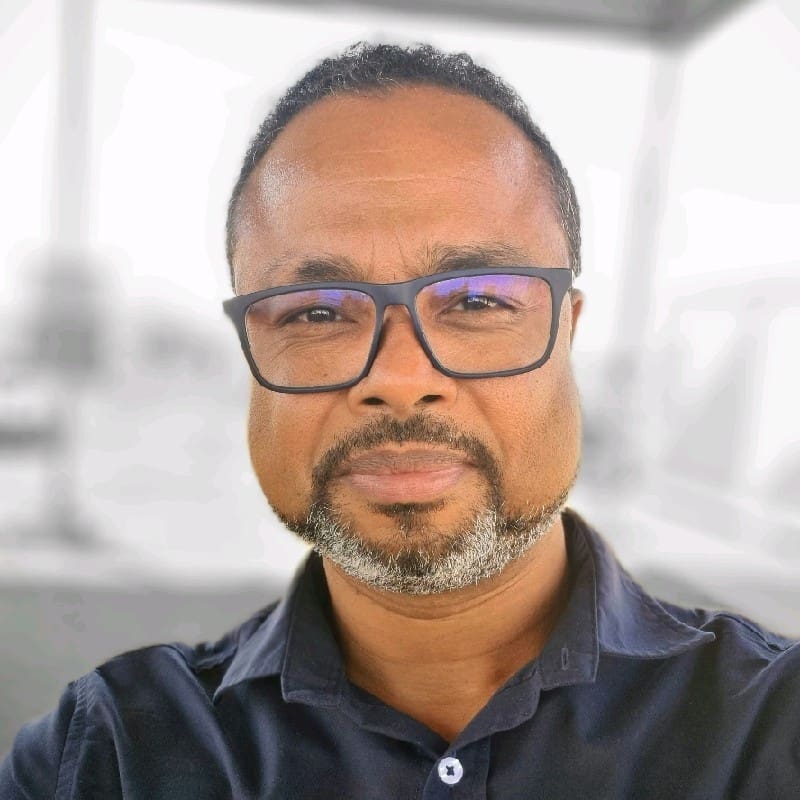True Talks
Mastering Risk: Keeping Billion-Dollar Projects on Track
In this episode of True Talks, Andy Verone, Chief Strategy Officer at Contruent, sits down with risk management expert Leonardo Barros to explore how billion-dollar projects can stay on time and on budget — even in the face of massive risks.
Leonardo shares real-world stories, including a $100M supply chain loss, a project turnaround that delivered $20M ahead of schedule, and how AI is reshaping risk management today.
Subscribe to our mailing list to receive updates on upcoming episodes!
Featured Guest

Leonardo Barros
Project Controls Leader
Leonardo Barros is an experienced project manager with a strong track record in Oil & Gas, Mining, Paper & Pulp, and Civil Construction. He has led large-scale projects like FPSOs MV24–MV29 and Anglo American’s Minas-Rio, with expertise in contracts, risk, scheduling, and cost control. Leonardo specializes in project execution using FEL methodology and has managed budgets up to $8B and teams of 250+.
Transcript
Show the full transcript
True Talks: Mastering Risk – Keeping Billion-Dollar Projects on Track
Andy Verone:
Leonardo, welcome to True Talks, sponsored by Contruent. We appreciate you joining us today. Leonardo, we have a global audience.
Why don’t we start by spending just a few minutes and introduce yourself and tell us a little bit about what you’re up to.
Leonardo Barros:
Okay. Thank you, Andy, for inviting me to this session.
I’m Leonardo Barros. I’m a chief engineer from Brazil. I work in risk management for long and approach management, I can say, since 2006, so I’m very excited to be here.
Andy Verone:
Leonardo, we appreciate you joining. How is the weather in your part of the world?
Well, today it’s cloudy here. I’m in Rio de Janeiro, so people think it’s always hot, but no, it’s not. It’s cloudy. It’s very nice. Instead of having that 40 degrees Celsius, I have today like 24 or 25.
It’s very, very good.
Andy Verone:
That’s great, bud. I appreciate you sharing that.
And again, thanks for joining us. Leonardo, you have a really strong reputation and passion for risk management on large capital projects, particularly your focus on protecting not only your brand, but your company’s brand, and then optimizing those projects to achieve just the best potential outcomes in cash flow. Why don’t you spend a couple of minutes and talk to the audience about your experience and how really proven risk management can help any project?
Leonardo Barros:
Well, as a civil engineer, I started with the majority of us in the construction yard. I spent several years there, then I realized that something was wrong. The parts were always getting late, overrun budget, and I realized that planning costs were the first key to look at.
And then I realized that not just that, I need to go one step further. So, okay, risk management, that’s what is missing in our project. So, I investigated that, working risk management since 2009, and then I realized that when you have the risk management view, when you have an absurd disclosure in yourself, you really can go after a project running in time and in budget all over the time.
For sure, you’re looking for, you’re not always going to reach it, but it’s a mentality, something that you have to go for it. And with this, you go to look for the correct tools to really to model your project according to the project objectives, to the company objectives.
Andy Verone:
That’s great.
I appreciate that. Leonardo, how important when you’re managing risk on a project is the WBS and the coding structures and where you’re collecting those costs so you can appropriately manage those risks? I mean, that’s got to be a very important part of the process.
Leonardo Barros:
Yeah, this is something that I really fight for, have something good.
Majority of the companies are still doing things in a spreadsheet. That is completely insane because we have parts of billions of millions of dollars or reais, and this really doesn’t work. So, have a structured data in the WBS, the CBS and RBS.
This is the first step for you to manage risks and not just risk. When I say risks, I’m always saying about risk, scheduling and cost because this is everything, they work together. So, you cannot really properly manage risk without a WBS, without a CBS.
It’s the first step you have to take.
Andy Verone:
Wow, that’s great advice and it makes perfect sense. Leonardo, talk a bit about the supply chain.
I mean, I think in today’s world, the world we live in, I mean, there’s always a real risk to the supply chain of any project. And I know you have some amazing experience and stories around the importance of managing the risk on that supply chain. Why don’t you tell us a bit about that?
Leonardo Barros:
As I work with several construction projects, well, I have a lot of contractors and I have a lot vendors and they always work together in a certain point when the materials and equipments arrive.
So, I have bad and good stories of myself. So, let’s start with a bad one. I had a really loss in 2015, 16 by this one, of 570 million reais, that’s something about 100 million dollars.
What happened? We didn’t investigate properly one subcontractor that had a lot of our equipment material and it had just been corrupted. So, we lost this amount of money. We had to go after all those materials, those equipments again.
Partly South Korea and the company South Korea were corrupted again. So, investigating properly the supply chain is key for risk management. You have to do it since the day one in project.
As we are in the global world now, so we buy everything in all over the world. We cannot do things that we did in the past. We have to, since day one, investigate everything.
So, we have to have the proper software, the proper tools to investigate all our supply chain since the beginning, how to properly place a contract, how to properly do a good expedite in our contracts, everything until we have our goods in the way where they have to be. That’s great. Great advice.
Andy Verone:
So, talk about an opportunity that you had where that risk management was really benefiting, that your project and your organization have benefited from just really good early detection of risk management.
Leonardo Barros:
Well, we had one transmission line project with substations that the initial assessment was for a four month delay. So, we worked very hard on the risk assessment and ended up with 30 days anticipation.
With this, we could have 140 million reais upfront payment. That is talking about like 100 million should be like 20 something reais, million reais, sorry, dollars. So, have this money upfront 30 days after, sorry, 30 days before, it’s gold, it’s money in the pocket.
The shareholders, they were absolutely happy for that. So, the company, they continue to do this and they use risk management until today.
Andy Verone:
That’s amazing.
Great story. I guess my next question, and I think you just answered it, right? So, from your experience, who is the biggest beneficiary of robust risk management? Is it the owner? Is it the contractor? Is it the financial teams? And I think you said it, it’s really all the above. What can you share there from who benefits most from good risk management? When you have this culture of risk management, you have everyone going to be benefited.
Leonardo Barros:
So, you have the shareholders at the end of the day because you have a project that will be in budget and in time. So, we have the people in the project that work in the project because they have more time to think in all the response they have to think, to implement, to manage properly the risks. You have the contractors and the vendor themselves.
Why? Because they have a more transparent work. They don’t have to hide anything. So, we can work cooperatively.
That is very different from the past. We have to have risk management since day one because this will save money, not just for the owners, but for everyone in supply chain. Yeah, that’s amazing.
And it really just resonates that it’s really people, process and technology, right? The three coming together with that common shared goal of delivering the project on time and on budget. So, I think that’s great.
Andy Verone:
Leonardo, there’s a lot of talk in our industry around artificial intelligence.
How do you see AI reshaping the field of risk management? And more importantly, are you seeing risk simulations? Have you had the opportunity to be able to use a bit of that technology? And if you haven’t, where do you see that going?
Leonardo Barros:
Well, AI is everything today. People need to understand that you have to work with AI from now on. You cannot escape from that.
So, I use AI on a daily basis. On a daily basis, I use it. For risk management, how do I do it? Well, we can create a risk register.
We set input in an AAR and say, hey, tell me, I’m in this industry. So, how is it going? Am I covered? How are my response plans? Is everything okay? So, it’s step one. But until we can reach really the simulation that’s a completely autonomous simulation, this will take a while for that one.
Because today’s AI is still assisting us in making our work better, not really doing the work for us. This is a work in progress, but we are a bit far from that. I can see it.
Andy Verone:
Yeah, for sure. But I think there’s endless opportunities for AI, especially. We pride ourselves at Contruent to taking the scope, the schedule, and the cost model, bringing those together, integrating those to give that common layer and that common data.
So, super excited about what I see in the future for AI and risk management. Leonardo, you’ve been incredibly gracious with your time. Keep up the good work on risk management.
It’s something that I think more people in the industry need to talk through, and we really appreciate you joining us today. Hopefully, I’ll be down to see you here in the future. So, thank you.
Leonardo Barros:
Oh, I appreciate the opportunity, Andy. Let’s work together. Let’s make our projects much, much more on time and in budget with risk management.
Andy Verone:
I appreciate that, but that’s what we’re all trying to do. So, appreciate your time. All right.
Thank you, everyone. Thank you.


